Over the years, marketers have been changing their tactics in response to the consumer. Nowadays, consumers are a lot savvier and are being conditioned by brands like Amazon to have certain expectations, especially in their checkout experience.
In this webinar, Kath Pay, the Marketing Director at Cloud.IQ, shares tips for what marketers can do to adapt to an increasingly savvy consumer base. Kath has been in the digital marketing space for 18 years.
Here’s what someone who lives and breathes marketing has to say about how to improve your customers’ checkout experience:
FBM Theory
The Fogg Behavior Model, created by Dr. BJ Fogg, shows that consumers need to have three factors in place in order to make the conversion: motivation, ability, and a trigger.
Key #1: Motivation
Build up their motivation
Building up customers’ motivation is really key because we want to ensure that we’re making the most of an opportunity. This motivation means that we have to engage the customer and reduce all the barriers of conversion. The more we can engage, the more we can be compelling and sell to them.
Key #2: Ability
Make it easy
Reduce barriers to conversion. Make the journey on your e-commerce site as easy as possible.
Key #3: Trigger
Ask for conversion at the right time
Ask for the conversion at the right time, using the right copy, using the right call to action, etc.
4 Different Personality Patterns
In her research, Kath has found that these four personality traits are fundamental to us as humans. As marketers, it is helpful for us to understand these traits so that we can appeal to many types of clients.
Competitive and Spontaneous personalities are fast decision makers. Because of that, you need to catch their attention without requiring them to scroll down the page. Methodical and Humanistic types are slow decision makers who take their time before making a purchase.
If you read the chart from top to bottom, Competitive and Methodical are logical thinkers. They want to see the facts and understand what your product or service is all about. Spontaneous and Humanistic people make decisions that are mainly based on their emotions.
Leverage Human Traits
Jakob Nielsen is a computer scientist who conducted research to understand whether we all use the web in the same way. Do we all go online to accomplish a certain task in a certain pattern? No—in fact, Nielsen found out that there are four types of web users. Nielsen gave everyone in his research group the same task and tracked their responses. The results mapped back to the four different personalities above:
These personalities designate how we typically navigate on the web. As marketers, we need to understand this and use this information to make our users’ experience better.
Competitive personality
These people are fast-paced decision-makers who are logically oriented. They want results quickly and are the most difficult to sell to out of the four personality traits. This doesn’t mean that you should give up on them. It just means that you need to approach things in an appealing and logical way to win them over.
Here we can see how Screwfix created an ad to appeal to competitive personality types. They actually created an email with these four different personalities in mind. (You don’t need to create four different versions of your website.)
Since competitive and spontaneous types want fast results (and don’t really like to scroll endlessly for information), try to have as many points that will resonate with them — plus a call to action — at the top. The word “Power,” the five-star rating, and the “Save 20 pounds” at the top will resonate with the competitive type of buyer.
Methodical personality
The methodical personality types are those who tend to take their time making decisions and are logically oriented.
In this same advertisement, the methodical personality type will look at all the bullet points to understand the product’s values, features, and performance. They’ll do all of their research online and will be quite happy to do so. They are the ones most likely to click through an email. A lot of the points that appeal to methodical personalities in this graphic are below the fold.
Spontaneous personality
The spontaneous personalities are those who make fast-paced decisions and are emotionally oriented. They are easy to sell to and are more likely to be impulsive buyers.
The majority of the elements designed for spontaneous consumers are above the fold. The title is sexy because that’s the first thing they will see. They will also be looking at the imagery, the five-star rating, and the “Add this” — they want things that will make their lives easier. Streamline the process for them and provide great customer service — they’ll love it!
Humanistic personality
Humanistic personality types take their time when making decisions and are emotionally oriented. These are the people who want to find out about you and about your other customers.
These users want to know “Who else is using your product, and how can I find out more about that?” Ratings and testimonials resonate with humanistic personality types.
Use design elements to help with decision making
The next thing we need to look at is how we can start to use both implicit and explicit design queues to help us with conversion.
Here is an example from Typepad. Buyers are given three options. The designers are using the Goldilocks Theory, which says that when you package things up in threes, conversions are exponentially higher. You’ll find that, more often than not, brands create three price points to leverage this phenomenon.
The most popular option, in the middle, says “Unlimited.” The large orange call to action button makes the offer visually appealing. The green banner on the top left-hand corner provides social proof showing it’s the “Most Popular” option. Typepad already knows that this is their most popular package, so by pushing the image forward and adding extra design details, they are actually helping you make your decision.
Loss aversion
Loss aversion refers to people’s tendency to strongly prefer avoiding losses over acquiring gains. There are two main things that motivate people: one is to gain pleasure and the second is to avoid distress or pain. Most decisions stem from one of these two. (Loss aversion stems from the second one.) Some studies suggest that losses are twice as powerful psychologically as gains. As marketers, we can make this work in our favor.
In this ad, the marketer is drawing on loss aversion by telling the consumer that only 7 items are left. This technique is frequently used on hotel and other accommodation sites. Honestly, it works.
This is leveraging on social proof as well. It tells the customer that so many other people have made the purchase that there are very few items left.
An example of something called the anchoring effect is also used in this ad. Look at the top where the prices are written out — Now, Then, and Was. By showing us the initial price (Was) and anchoring it in our mind, the new reduced price (Now) increases our motivation for buying the product.
Address customer concerns
This is a huge factor when we’re talking about the e-commerce journey. What causes people to abandon during a journey?
Barilliance gathered data to find out why customers abandon their online shopping carts. The main reason? Unexpected (or unexpectedly high) shipping charges. We need to address customer concerns and provide helpful information.
Here, is an example that gives users delivery options from the beginning of the journey.
Before the customer reaches the checkout process, they are shown the delivery charges and options, making the purchase as frictionless as possible.
Want more tips? Check out this video:
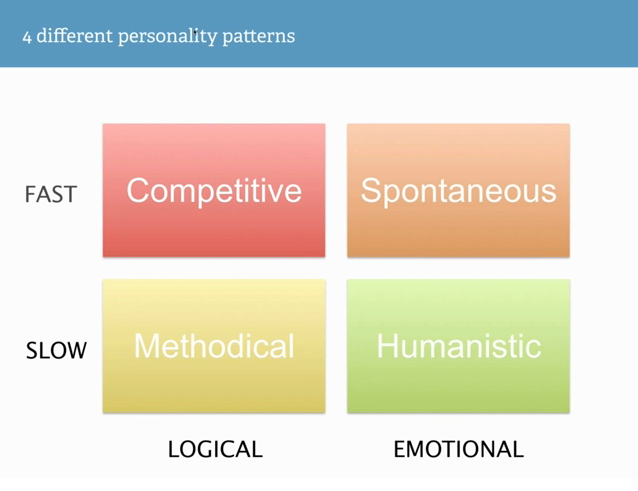
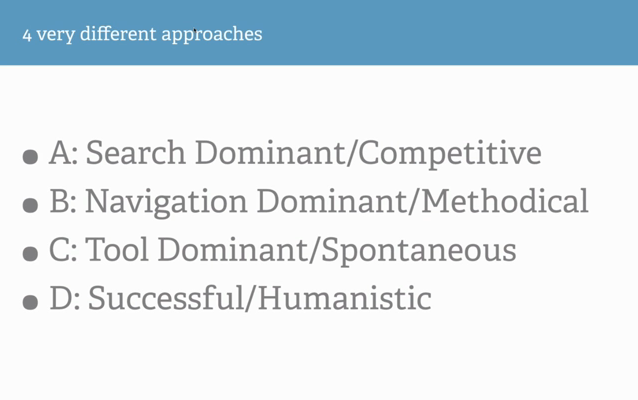
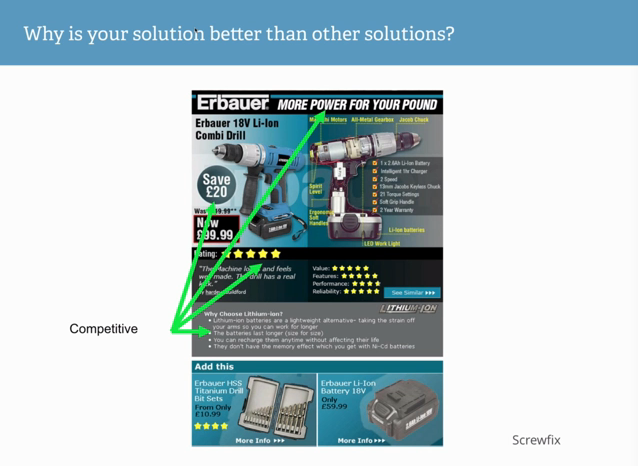
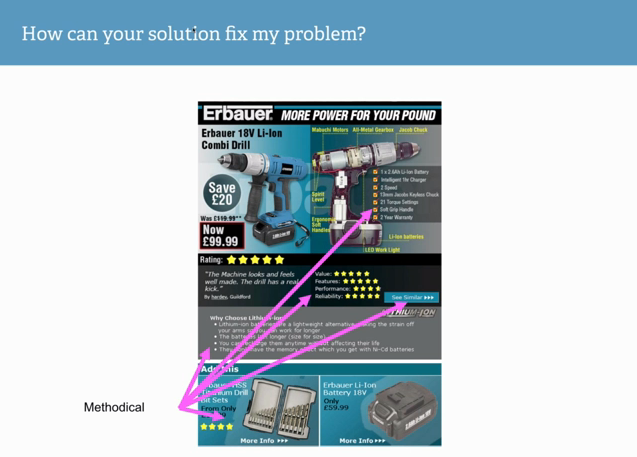
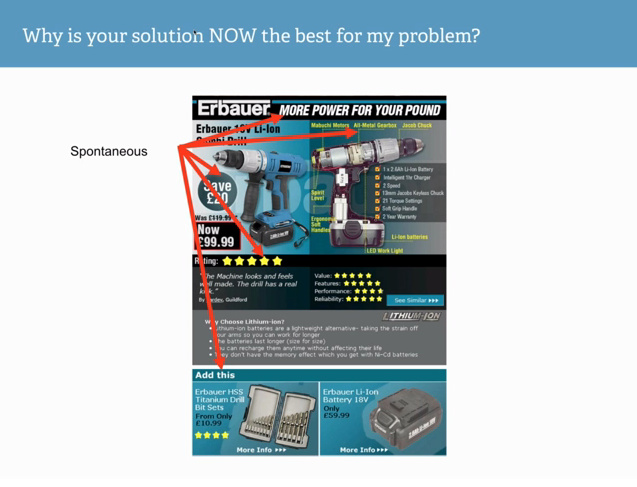
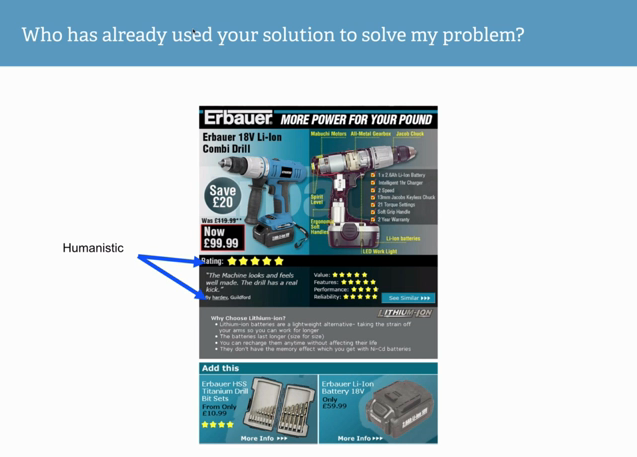
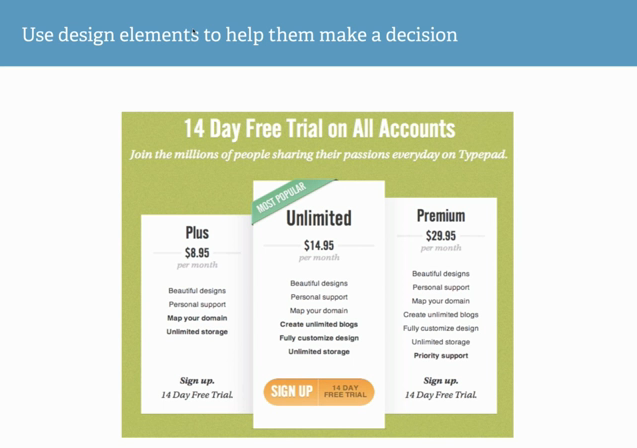
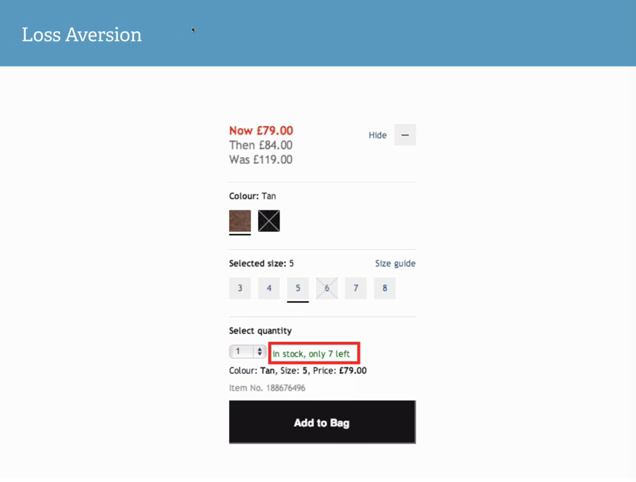
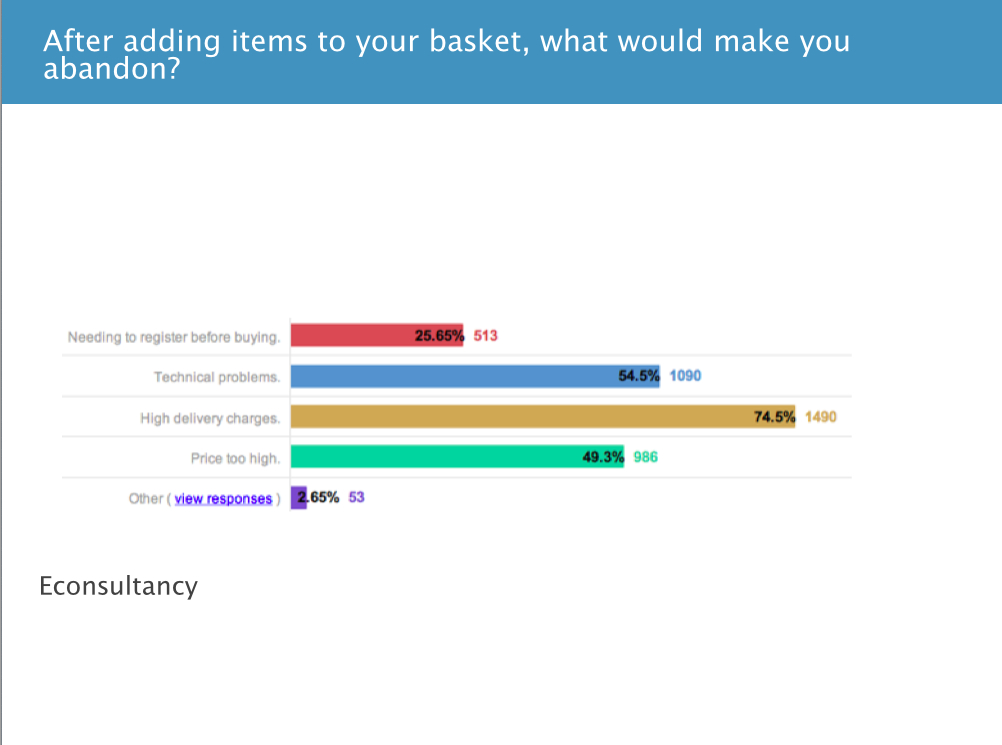
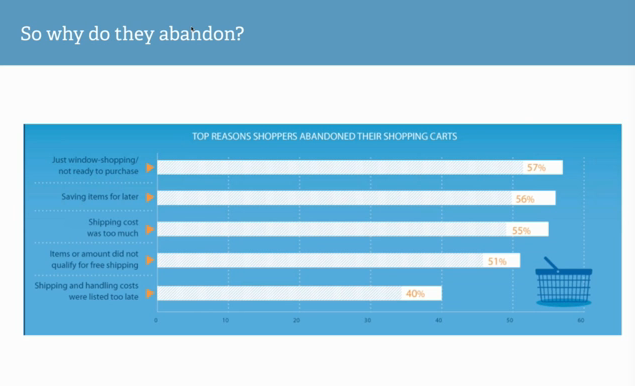
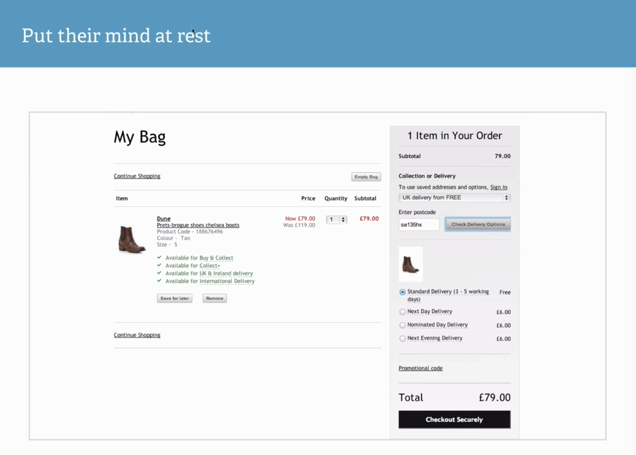
Comments (0)